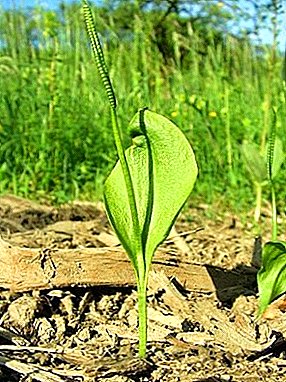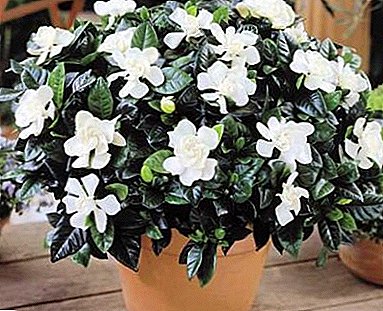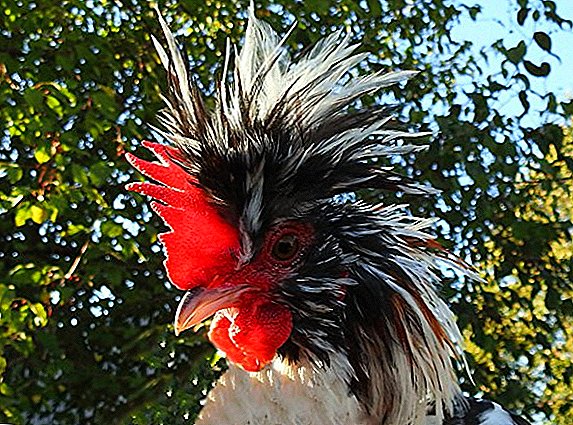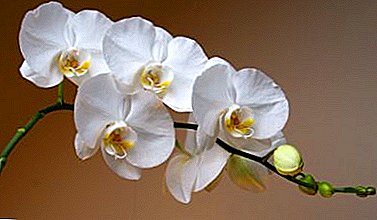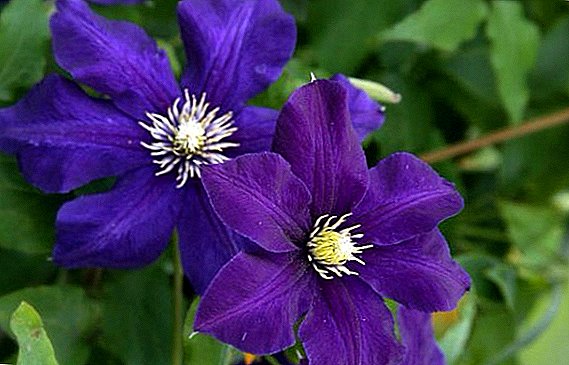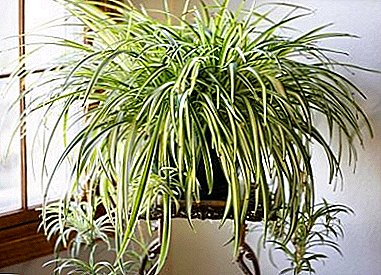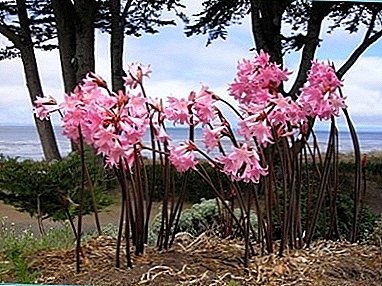
"Amaryllis" - one of the most beautiful indoor flowers with large buds in the form of a bell.
The variety of color and the subtlety of its flavor are impressive.
The plant does not require special attention and takes root well, pleasing with its flowering.
A photo
The photo below shows the flowers of "Amaryllis", with proper care at home:




Home care
How to care for "Amaryllis" at home? It is not difficult, because the flower is an unpretentious representative of the flora and will delight you with its magnificence, if you follow the recommendations for its content - the correct irrigation, lighting and distillation. To avoid problems with cultivation, it is better to get acquainted with possible diseases and pests - prevention is also useful.
Can I keep at home?
 The flower is absolutely suitable for home maintenance if you create conditions close to natural for it - the necessary acidity of the soil, timely irrigation, sufficient humidity in the room and a convenient place on the windowsill.
The flower is absolutely suitable for home maintenance if you create conditions close to natural for it - the necessary acidity of the soil, timely irrigation, sufficient humidity in the room and a convenient place on the windowsill.
Good plant care will ensure re-flowering throughout the year and will bring aesthetic pleasure to its owner.
Pruning
The foliage of Amaryllis is gradually discharged - by the end of autumn. Intentionally pruning the yellowed leaves should not be. Dying off, they transfer useful organic matter into the bulb - this reserve will be needed before the budding pasture. If several leaves that have not faded to the end remain for a long time, they should be bent down and cut off at the base with a sharp knife.
Watering
Its frequency should be taking into account the time required to dry the earthy coma. Watering is recommended sparingly, without flooding the bulb and root system, until the flower reaches 5-7 cm in height. When the arrow or the leaves start to climb, the soil is moistened more intensively.
Attention! An excess of moisture is extremely harmful for a plant that has not yet taken root.
We can not allow it to appear areas affected by rot. Especially dangerous period - cold. Then the evaporation of moisture is slow, and the process of decay can be activated.
Landing
 Capacity is selected, commensurate with the plant itself and its dimensions. This can be a separate pot up to 20 cm high or a larger container. How to plant bulbs "Amaryllis"?
Capacity is selected, commensurate with the plant itself and its dimensions. This can be a separate pot up to 20 cm high or a larger container. How to plant bulbs "Amaryllis"?
During planting bulbs should:
- abandon the use of too light pots to avoid tipping over during the budding period;
- take well-fertilized soil;
- use quality drainage;
- to bury the bulbs with a blunt end in the ground, tamping it down two thirds.
Important! Try not to damage the sensitive roots during the procedure.
Prepare medium sized containers for planting. They have one hundred percent germination, if used as intended immediately after collection. In the tank seeds are distributed at the same distance from each other. They fall asleep soil thickness of 5 mm. After moistening, the planting is covered with plastic wrap or glass and the temperature is kept at 25 degrees.
The video describes in detail the process of planting a flower "Amaryllis":
//www.youtube.com/watch?v=TjWHffwtHLM
Transfer
 How to transplant "Amaryllis"? Frequent transplantation of the flower does not require, usually the procedure is carried out at intervals of 3-4 years.
How to transplant "Amaryllis"? Frequent transplantation of the flower does not require, usually the procedure is carried out at intervals of 3-4 years.
Start it after the flower is dying off:
- the bottom of the tank is filled with a drainage layer of 1-3 cm;
- the next layer is sand;
- rotten areas and dead scales are removed from the roots;
- kids are separated along with their rhizome;
- they are treated with a fungicide.
Children are immersed in the ground by 2/3 to ensure normal growth and protection from rotting.
Temperature
Normal flower development is ensured by the observance of the temperature regime within:
- 20-22 degrees in the daytime;
- from 18 degrees to dark;
- +10 - during the rest period.
Sharp drops are not desirable - the plant does not tolerate temperature changes. He needs smooth transitions from heat to moderate mode and vice versa.
Lighting
The flower needs light very much. The best place to place it is the southeast or southwest of the room. The south side is also suitable, but it will be necessary to protect Amaryllis from direct sunlight, especially at the height of daylight hours.
The direct rays of the sun are valid until 11 am and after 15, but only in summer. Vegetative development is possible with a light day lasting 16 hours. The pot is periodically turned to the foliage, the arrow is strictly vertically.
Growing and breeding
 How to grow "Amaryllis"? Growing a flower at home, perhaps in two ways - from seeds or with the help of children. How to grow "Amaryllis" from seed? To do this, pollinate the pollen collected from the stamens with a brush of the pistil.
How to grow "Amaryllis"? Growing a flower at home, perhaps in two ways - from seeds or with the help of children. How to grow "Amaryllis" from seed? To do this, pollinate the pollen collected from the stamens with a brush of the pistil.
Seeds ripen in a month. They are planted in plentifully watered soil and put the container in a warm place, where there is not too bright light. Shoots will appear in 4 weeks. Strengthened seedlings later seated.
Reproduction is carried out with the help of babies separated during transplantation. There must be a non-damaged root system. Bulbs choose not deformed, without fungus or dents.
Children are treated with fungicides and planted in the ground. Fertilizing and watering need constant. The period of growth will be 2 years.
This video will tell you about the nuances of growing Amaryllis at home:
Priming
 The soil for Amaryllis includes turf, leaf soil, humus and sand. They are taken almost equally. Sometimes peat is added instead of humus.
The soil for Amaryllis includes turf, leaf soil, humus and sand. They are taken almost equally. Sometimes peat is added instead of humus.
During transplantation, the old land is not left on the roots of the plant, it is shaken gently. Before spreading the soil mixture into the pot, a drainage is made of small stones at the bottom.
Important! The pot is selected according to the size of the plant.
For a large and an adult, the capacity is taken larger than for a young “Amaryllis”. Tara should not be light, otherwise the risk of falling will increase when the flower releases an arrow, and it outweighs this container by weight.
Fertilizers
Leaving means periodic top dressing. To do this, use a complex liquid fertilizer, where there are phosphate, mineral and organic components. The regularity of the procedure - 3-4 times a month before flowering, 2 times a month - after. When the leaves disappear completely, the need for fertilizer disappears. Resume food as the appearance of young leaves and peduncle.
Benefit and harm
The flower has both beneficial and harmful properties.
The plant has the following benefits:
- aesthetic enjoyment;
- carbon dioxide absorption and oxygen release;
- attracting dust (good dust collector);
- fight with dry air in the room.
Important! Only Amaryllis bulbs themselves are harmful to humans and animals - they are poisonous.
To protect yourself, it is better to work with gloves while transplanting and to remove the flower away from children.
Diseases and pests
 Amaryllis suffers from parasites and diseases when insects settle on its foliage, peduncle or roots.
Amaryllis suffers from parasites and diseases when insects settle on its foliage, peduncle or roots.
Among the pests are:
- white scarlet;
- onion tick;
- mealybug;
- false shield.
Stern mechanical damage - damage to parts of the plant, pests spread and provoke fungal
Diseases:
- fusarium (root rot);
- stagon spasm (redness of the bulbs);
- anthracosis (dark spots, brown drips on the foliage).
To combat them, the flower is isolated, the affected parts are removed, treated with insecticides.
Proper care for the "Amaryllis" at home - the key to its lush flowering and your good mood.


